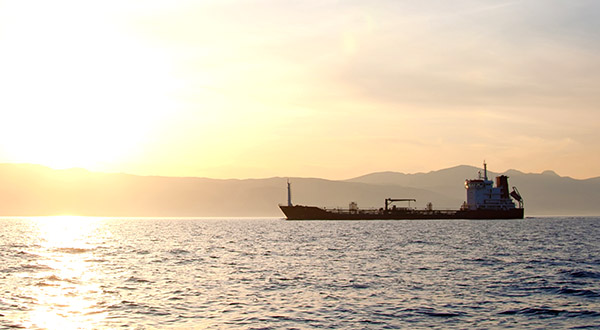The Swedish P&I Club issues its Monthly Safety Scenario for March 2016 regarding an accident due to blackout and recommends preventive measures. The Swedish Club publishes on a monthly basis a new “Monthly Safety Scenario” (MSS) to assist owners in their efforts of complying with the maritime regulations.
The Incident
The bulk carrier had steel products onboard and crossed the Pacific to arrive at its discharge port. There was a change of command during the Pacific crossing. This was the first time the new captain had been in command. The previous captain had been onboard for about 11 months.
At the final discharge port the pilot was picked up in the morning. The vessel proceeded up the river under manual steering. The weather was intermittently rainy but visibility was good and the wind was light.
There was a proper pilot exchange between the pilot and master. The pilot was given a pilot card describing manoeuvring characteristics. The pilot checked to confirm there was an anchor watch forward, which was a requirement.
Normally the 3rd engineer is stationed in the emergency generator area during manoeuvres, but for this river transit he and the 2nd engineer had changed watch positions so the 3rd engineer could gain more experience in another area of the engine room. The 3rd engineer was doing his rounds on the fuel treatment area when he noticed excessive differential pressure on the fuel filter.
Without consulting anyone he decided to carry out a manual back flush after switching from one fuel filter to another. He moved the switch-over lever only part of the way, which resulted in the fuel flow to the main engine and auxiliary engines being interrupted and leading to a total blackout.
The Chief Engineer and the rest of the engine room watch acted immediately but it usually takes 10 – 15 minutes to recover from a blackout.
At the time of the blackout the vessel was altering course to port for a major turn of almost 90 degrees. There were no other vessels underway in the area.
The master ordered full astern on the engine telegraph but nothing happened due to the blackout. He realized that he had no engine control, the main engine revs were falling, there was no steering control and the vessel still had some port rudder. The vessel was moving at about ten knots.
In front of the vessel there were some smaller vessels moored at the quay. The pilot ordered starboard anchor to be dropped but it had no effect.
The pilot ordered the fog signal to be sounded. He also called the berthed vessels on the VHF and the VTS and he ordered the port anchor to be dropped.
Both anchors were dropped and the vessel was slowing down a bit. Shortly afterwards the vessel, made contact with the quay at approximately 7 knots and continued alongside, hitting one of the vessels berthed alongside before proceeding out into the river again. The berthed vessels’ moorings parted, one snapping back and damaging a vehicle parked on the wharf.
The berthed vessel drifted away from the berth as own vessel wedged between it and the wharf, still making headway and scraping along the wharf, where it finally grounded.
Concsequences
Serious damages to own vessel and the vessels at the berth.
Preventive Measures
- If a job is delegated it is paramount that the person delegating the job ensures that the person doing it has sufficient knowledge.
- Implement minimum training requirements for each position onboard the vessel.
- A useful tool for a manager is to have a career plan for each officer, which defines required courses and training
Source: The Swedish P&I Club






























































